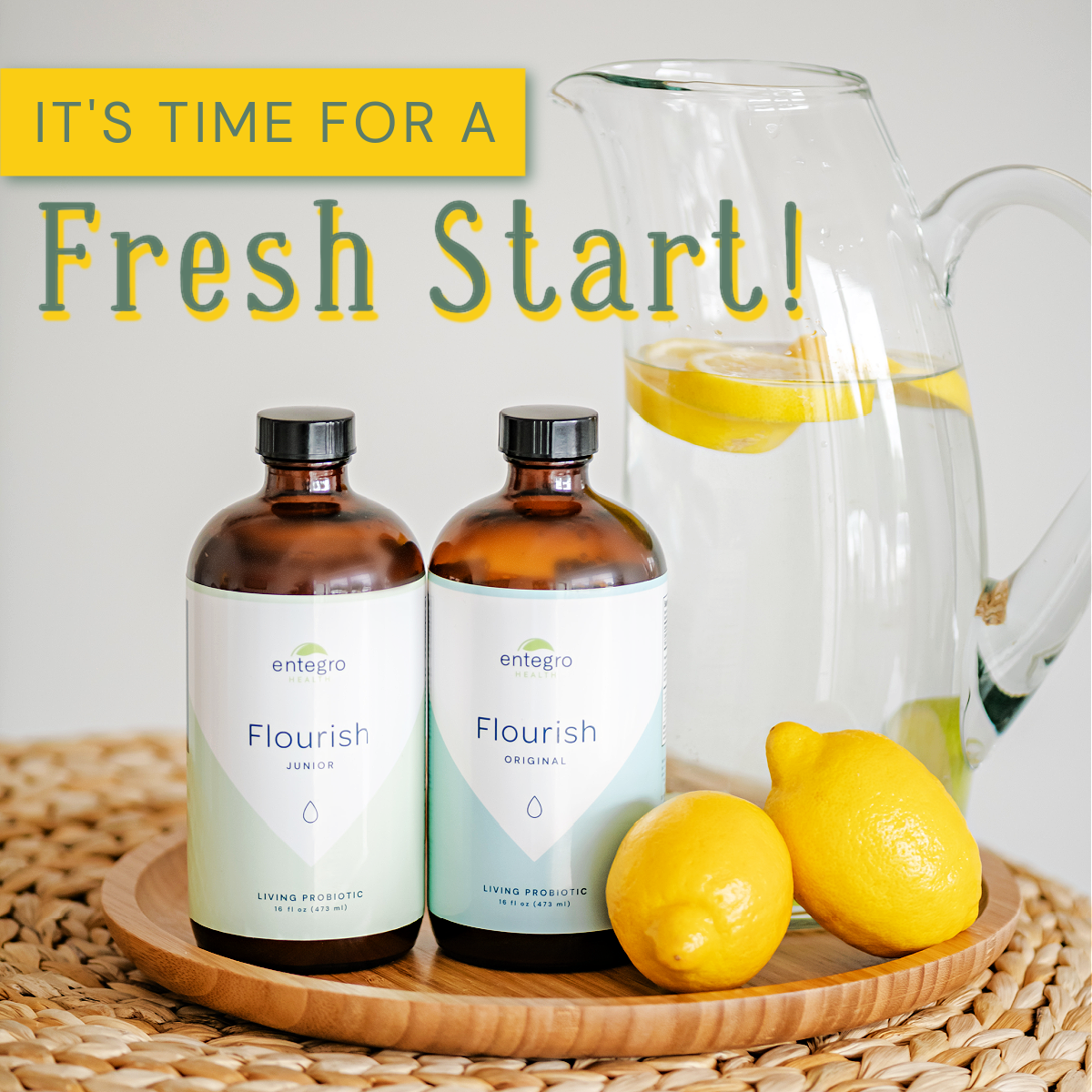Micro what now? A glimpse into the human gut microbiome
Your body is an amazing collection of cells that make up the muscles, bones, organs, and nerves that make you, YOU.
These systems work together to create movement, emotion, and thoughts to create the experiences you call life. At least, that’s what we used to think.
Turns out, that’s only 10% of the story.
For every 1 of your trillion cells, there are nine non-native hitchhikers calling your body home. In fact, about 1,000 of the 4,000 known species (100 trillion of them in total) live in the gut alone.2,5 Sounds crazy, doesn’t it?
Previously, we thought of bacteria primarily as harmful invaders…
Bad guys trying to take over and make the immune system work to fight them off. As understanding advanced, there was a general knowledge that bacteria were present in the human gut and helped the body. Recent advances in technology have allowed science the tools to identify and grow in the understanding of this collection of critters we call the microbiome. Science has discovered these bacteria are so critical to human life and the way we interact with the world around us, that things can go terribly wrong if/when we don’t allow them a place to stay or grow. How amazing! How intricate! A new frontier, ready for discovery.
The human gut microbiome is made up of bacteria, archaea (single-celled organisms with no cell nucleus), eukaryotes (organisms with a nucleus enclosed with a membrane), and viruses that live together.5,1
Collectively, these microbes interact with each other, and you the host. The bacteria present in the gut unlock the potential of the food that has been consumed. Bacteria/microbes free the short-chain fatty acids (SCFA) from dietary fibers and are the #1 end-products of fermentation of the non-digestible carbohydrates before it becomes your #2.3,5
Short Chain Fatty Acids are in turn used in the body for a variety of critical processes.
It not only echoes the common understanding of high-fiber diets and favorable health outcomes,3 it is just one of many examples of the way the bacteria in our gut are so important to the human body.
The interaction between the bacteria and host is complex, varied by each individual and dependent on a whole lot of factors.
These factors include acute and chronic food choices, family history, antibiotic use over a lifetime, mode of delivery as an infant, acute and chronic exercise choices, and disease. Pinpointing exactly how these factors all work together to create your complex microbiome is a challenge.
The best way to understand the most recent research is comparative and not necessarily causal.
For example, researchers have found certain bacteria that are present in higher percentages in healthy individuals compared to those with atherosclerosis.4 It is largely believed that the microbiome has an impact on the structure of the body, but we must also acknowledge that disease or structures within the body have an influence on the microbiome too.1 What is for certain, is that a healthy gut microbiome is rich, diverse, and resilient.2
So, what’s a human to do with this information?
All we can do is make our gut microbiome, hereby referred to as the gut, as diverse, rich, and resilient as possible. This includes simple things such as:
1. Be aware of what you put into the ol’ gas tank.
Strive to eat foods from lots of different sources, high in fiber, and as natural as possible. Avoid a diet consistently high in sugar, artificial sweeteners, and food additives. Basically, the Standard American Diet.
2. Be aware of environmental factors that have an influence on the gut.
Environmental factors that have a negative effect on the gut include some commercial and household chemicals, as well as antibiotic use (but do use as recommended by your health professional!)6. Make your gut a comfortable place for happy bugs, a place where they want to be.
3. Exercise! Sleep! Reduce Stress! Easy, right?
4. Eat fermented foods daily such as kimchi, sauerkraut, tempeh, yogurt, or kombucha.
Sure, these things look good on paper, but are much more difficult when applied to the fast pace of life and external factors that cannot be controlled. Thankfully, a fifth option can help alleviate these challenges:
5. Take a high-quality probiotic.
 Flourish Original and Junior contain 11 strains from five different families. Not only that, but the bacteria are kept in their most natural liquid environment which retains all the goods kicked off by the bacteria during the growth phase. The powerful serving of just 1 Tablespoon provides a minimum of 8 billion CFUs of bacteria*. This diverse grouping of bacteria has grown up together – they are synergistic and do not compete with each other. Rather, they help each other out just like good friends. These fermented friends are acid producing, creating an acidic environment and a favorable transport to the lower GI tract.
Flourish Original and Junior contain 11 strains from five different families. Not only that, but the bacteria are kept in their most natural liquid environment which retains all the goods kicked off by the bacteria during the growth phase. The powerful serving of just 1 Tablespoon provides a minimum of 8 billion CFUs of bacteria*. This diverse grouping of bacteria has grown up together – they are synergistic and do not compete with each other. Rather, they help each other out just like good friends. These fermented friends are acid producing, creating an acidic environment and a favorable transport to the lower GI tract.
Take care of your friendly hitchhikers and they will take care of you.
It’s a mysterious unknown, waiting to be understood and discovered. As Douglas Adam wrote in the Hitchhiker’s Guide to the Universe, “All you really need to know for the moment is that the universe (or microbiome universe in our case) is a lot more complicated than you might think, even if you start from a position of thinking it’s pretty damn complicated in the first place.”
*At time of bottling
Recommended Reading
- 10% Human by Alanna Colleen & Hitchhiker’s Guide to the Universe by Douglas Adams.
- Cho, I., & Blaser, M. J. (20212). The human microbiome: At the interface of health and disease. Nature Reviews Genetics,13, 260-270. Retrieved August 16, 2019, from https://www.ncbi.nlm.nih.gov/pmc/articles/PMC3418802/#R28.
- Collen, A. (2015). 10% Human. New York, NY: HarperCollins.
- Hoffmann, C., Dollive, S., Grunberg, S., Chen, J., Li, H., Wu, G. D., . . . Bushman, F. D. (2013). Archaea and Fungi of the Human Gut Micfrobiome: Correlations with Diet and Bacterial Residents. PlosOne.org. Retrieved August 16, 2019, from https://journals.plos.org/plosone/article?id=10.1371/journal.pone.0066019.
- Phillips, M. L. (2009). Gut Reaction: Environmental Effects on the Human Microbiota. Environmental Health Perspective,117(5), 198-205. Retrieved August 16, 2019, from https://www.ncbi.nlm.nih.gov/pmc/articles/PMC2685866/.
- Shreiner, A. B., Kao, J. Y., & Young, V. B. (2015). The gut microbiome in health and disease. Current Opinion in Gasteroenterology.,69-75. Retrieved August 16, 2019, from https://www.ncbi.nlm.nih.gov/pmc/articles/PMC4290017/.

 New customers! Get 11% OFF your first Flourish order with Code FRESHSTART11
New customers! Get 11% OFF your first Flourish order with Code FRESHSTART11